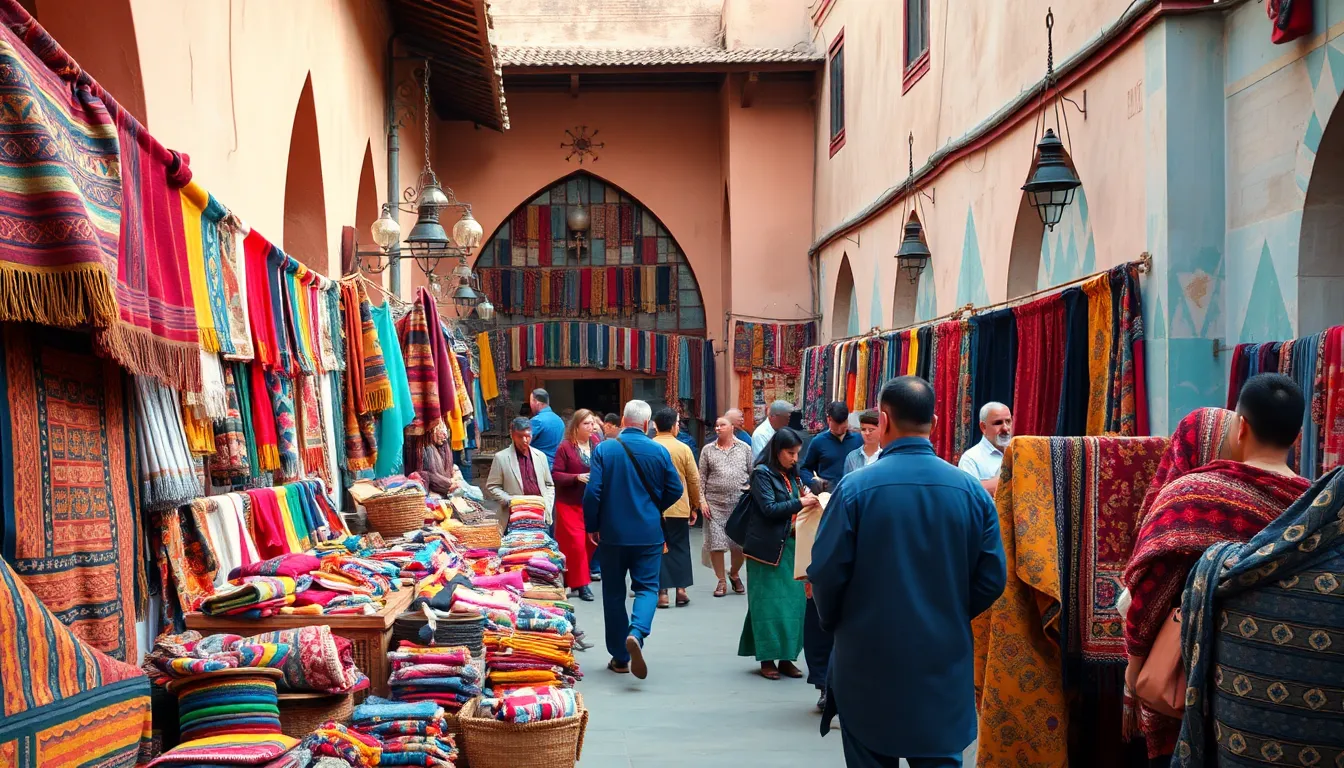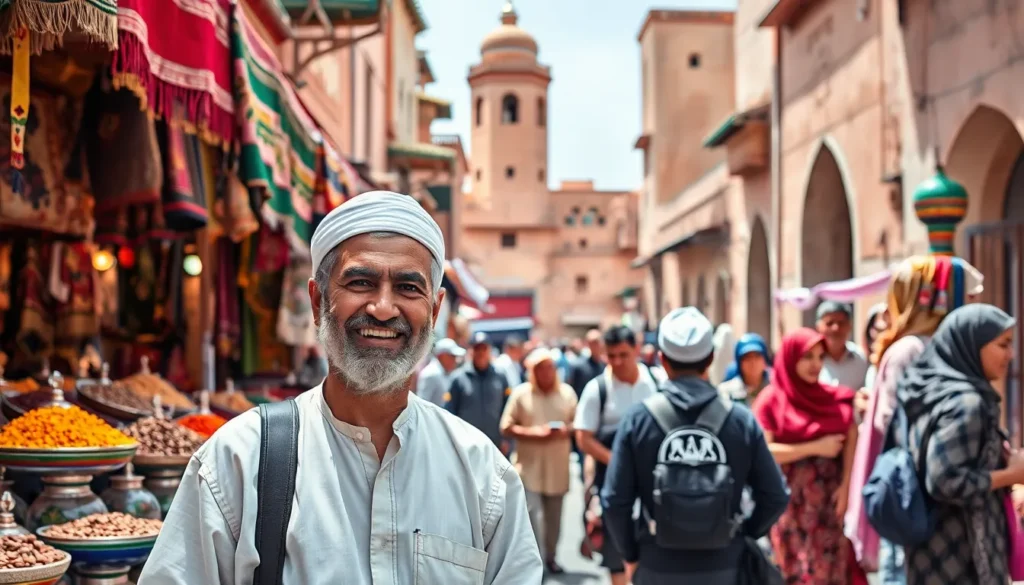Cultural regions are like the spice rack of the world—each one adds a unique flavor to the global dish. They’re not just geographical areas; they’re vibrant tapestries woven from shared traditions, languages, and lifestyles. Imagine a place where the aroma of local cuisine dances through the air, and the sounds of traditional music fill the streets. That’s the essence of a cultural region.
But what exactly defines these intriguing areas? It’s more than just a map location. It’s about the people who call it home and the customs that shape their everyday lives. From the bustling markets of Marrakech to the serene tea ceremonies in Kyoto, cultural regions offer a glimpse into the heart of humanity. So buckle up as we dive into the fascinating world of cultural regions and discover what makes them tick.
Table of Contents
ToggleWhat Is a Cultural Region?
A cultural region represents a specific geographic area distinguished by its unique cultural traits. These traits often encompass language, traditions, values, and shared lifestyles. Observers can see how the traditions of one cultural region impact the daily lives of its inhabitants.
Countries like Morocco and Japan serve as prime examples of cultural regions. Marrakech showcases a rich tapestry of Berber and Arab traditions, blending vibrant markets with historical architecture. In contrast, Kyoto exemplifies Japanese culture through its ancient temples, tea ceremonies, and seasonal festivals.
Cultural regions might also include subregions that highlight distinct cultural practices. For instance, various states in the United States exhibit unique cultural characteristics influenced by local history and demographics. New Orleans thrives on Creole influences, while the Pacific Northwest embraces Native American heritage.
Factors contributing to the distinctiveness of cultural regions include geography, history, and economic activities. Climate affects agricultural practices, which in turn shape local cuisines. Historical events, like colonization, introduce new customs and languages, diversifying the cultural landscape.
Cultural regions encapsulate the essence of human civilization, offering insights into the varied ways people express their identities. These regions reflect the complex interplay of customs, practices, and beliefs, creating a rich heritage that varies across the globe.
Characteristics of Cultural Regions

Cultural regions embody distinctive features that set them apart from one another. These characteristics shape the identity of a region and contribute to the richness of its cultural tapestry.
Language and Communication
Language serves as a cornerstone of cultural regions. It reflects local identity and fosters connections among inhabitants. In Marrakech, Arabic and Berber languages dominate, influencing daily interactions. Kyoto showcases Japanese as its primary mode of communication, deeply ingrained in traditions and customs. Each language carries unique expressions and idioms that convey the essence of the culture. Variations within these languages, such as dialects, enrich the cultural experience, showcasing the diversity within regions.
Traditions and Customs
Traditions and customs form the heartbeat of cultural regions. Marrakech thrives on its vibrant markets, showcasing local crafts and cuisines that highlight Berber and Arab influences. Festivals in Kyoto, such as Hanami, celebrate seasonal beauty and reflect Japanese appreciation for nature. Each community practices unique rituals that enhance social bonds. Food, music, dance, and art serve as vital expressions of cultural heritage. Collective celebrations bring together locals, reinforcing the importance of shared history and communal identity.
Religion and Beliefs
Religion significantly influences the character of cultural regions. In Marrakech, Islam plays an essential role, shaping daily life and community values. The call to prayer punctuates the rhythm of life, guiding spiritual practices. Conversely, Kyoto’s cultural landscape is rich with Shinto and Buddhist beliefs that interweave into various customs. Temples and shrines punctuate the area, serving as sacred spaces for worship and reflection. Such beliefs shape ethical frameworks, social structures, and artistic expressions found throughout each region.
Types of Cultural Regions
Cultural regions can be categorized into several distinct types, each reflecting unique characteristics and influences that shape their identity.
Geographic Cultural Regions
Geographic cultural regions arise from physical landscapes and environmental factors. Mountains, rivers, and climate significantly influence the customs, traditions, and lifestyles of the people living within these areas. For instance, coastal regions often have a stronger maritime culture, while mountainous regions might emphasize agriculture and livestock. The Mediterranean, characterized by its shared climate and trade routes, unites cultures that celebrate similar cuisines and life rhythms. In contrast, desert regions like those in North Africa foster distinct survival strategies, including nomadic lifestyles and specific architectural styles.
Political Cultural Regions
Political cultural regions are defined by governance and administrative boundaries. Sovereign nations, states, and municipalities establish policies that shape societal norms and values. Cultural practices often align with national identities, as seen in countries like France, where language and cuisine play pivotal roles in national unity. Regions such as Catalonia in Spain exhibit distinct cultural traits driven by their push for autonomy. Political movements and policies can lead to cultural revivals or suppression, highlighting the connection between authority and cultural expression.
Economic Cultural Regions
Economic cultural regions arise from specific economic activities that define livelihoods and lifestyles. Agricultural practices, industrial bases, and trade connections influence the culture of these areas. For example, regions focused on agriculture often celebrate festivals related to harvests, while industrial areas may foster a work-centric culture. Silicon Valley exemplifies a technological cultural region, with its focus on innovation and entrepreneurship creating a unique social fabric. Regions centered on tourism, like the Caribbean, develop cultural features that cater to visitors while reflecting local traditions.
Importance of Cultural Regions
Cultural regions play a crucial role in shaping identities and fostering community connections. They serve as the backbone of unique cultural traits and shared experiences.
Identity and Community
Communities within cultural regions thrive on shared traditions and languages. These elements contribute to a strong sense of belonging among residents. For instance, language often unites individuals in Marrakech and Kyoto, reinforcing their cultural identities. Traditional practices, such as festivals and rituals, foster collaboration and mutual support among community members. As people engage in these activities, bonds deepen, creating vibrant social networks. Cultural regions also encourage intercultural exchange, allowing individuals to learn from one another while embracing their own heritage.
Cultural Preservation
Cultural preservation within these regions safeguards traditions and values for future generations. Unique practices, such as local crafts and culinary arts, remain vital components of cultural identity. In many areas, efforts focus on maintaining traditional crafts, ensuring skills are passed down through generations. Festivals serve as platforms for showcasing these practices, generating awareness and appreciation. Furthermore, local organizations often commit to preserving endangered languages, reflecting the significance of language in cultural heritage. By valuing local customs, communities reinforce their identities while promoting cultural diversity and understanding.
Cultural regions serve as vital expressions of human identity and heritage. They embody the unique traditions, languages, and lifestyles that shape the daily experiences of their inhabitants. By understanding these regions, one gains insight into the rich tapestry of global culture.
The interplay of geography, history, and economic activities creates a distinctive flavor in each cultural region. As communities work to preserve their traditions and foster connections, they contribute to a broader understanding of cultural diversity. Embracing these unique identities not only enriches local communities but also promotes appreciation and respect for the world’s varied cultural landscapes.





